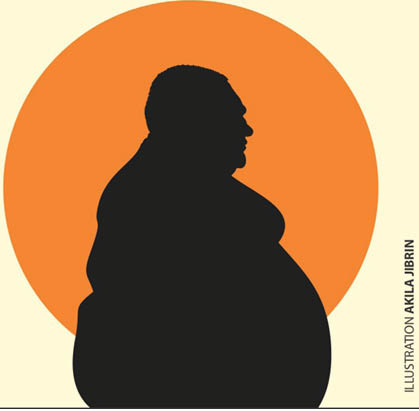Obesity rising in rural than urban areas, study reveals
A new study of global trends in Body Mass Index (BMI) has revealed that obesity is increasing more rapidly in the world’s rural areas than in cities. The research, led by Imperial College London and published in Nature, analysed the height and weight data of more than 112 million adults across urban and rural areas of […]

Obesity rising in rural than urban areas, study reveals
A new study of global trends in Body Mass Index (BMI) has revealed that obesity is increasing more rapidly in the world’s rural areas than in cities.
The research, led by Imperial College London and published in Nature, analysed the height and weight data of more than 112 million adults across urban and rural areas of 200 countries and territories between 1985 and 2017.
Height and weight can be used to calculate BMI, an internationally recognised scale which tells whether an individual has a healthy weight for their height.
The study, involving a network of more than 1,000 researchers across the world, found that from 1985 to 2017, BMI rose by an average of 2.0kg/m2 in women and 2.2kg/m2 in men globally, equivalent to each person becoming 5-6kg heavier.
More than half of the global rise over these 33 years was due to increases in BMI in rural areas. In some low and middle-income countries, rural areas were responsible for over 80 per cent of the increase.
The team found that since 1985, average BMI in rural areas increased by 2.1kg/m2 in both women and men. But in cities, the increase was 1.3kg/m2 and 1.6kg/m2 in women and men respectively.
These trends have led to striking changes in the geography of BMI over the three decades. In 1985, urban men and women in over three quarters of the countries had a higher BMI than their rural counterparts. Over time, the gap between urban and rural BMI in many of these countries shrank or even reversed.
According to senior author of the research, Prof. Majid Ezzati of Imperial School of Public Health, results of this massive global study overturn commonly held perceptions that more people living in cities is the main cause of the global rise in obesity.
Hence Prof. Ezzati said, “This means that we need to rethink how we tackle this global health problem.”
The team found important differences between high, middle, and low-income countries.
In high-income countries, the study showed that BMI has been generally higher in rural areas since 1985, especially for women.
The researchers suggest this is due to the disadvantages experienced by those living outside cities: lower income and education, limited availability and higher price of healthy foods and fewer leisure and sports facilities.
Prof. Ezzati said, “Discussions around public health tend to focus more on the negative aspects of living in cities. “In fact, cities provide a wealth of opportunities for better nutrition, more physical exercise and recreation and overall improved health. These things are often harder to find in rural areas.”
The main exception to the global trend is Sub-Saharan Africa where women gained weight more rapidly in cities, possibly because of more low-energy work (such as office work), less need for physical domestic tasks such as collecting firewood and fetching water, shorter commutes and greater access to processed foods.
